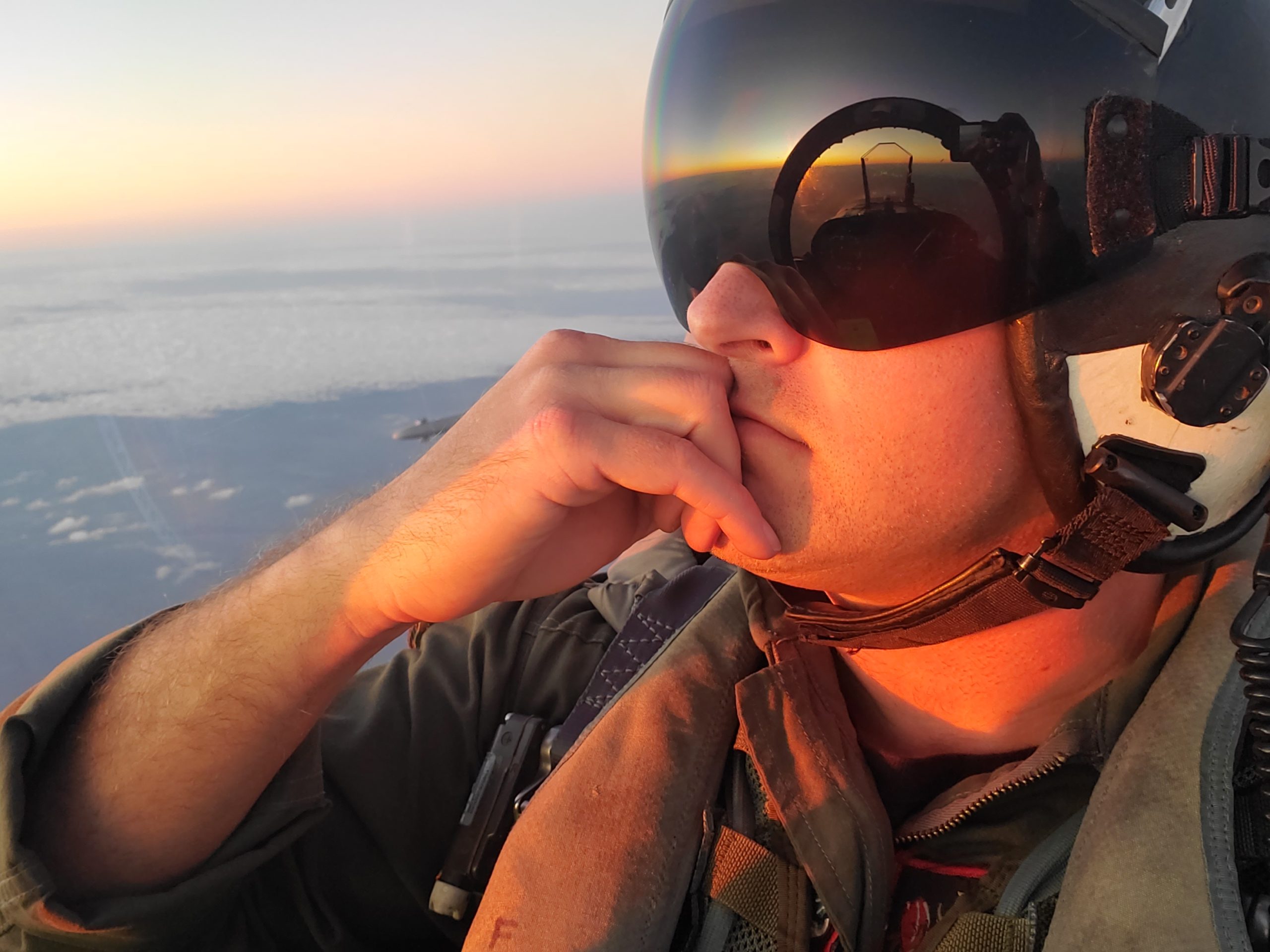Cockpit Views
The world looks different from 41,000 feet. Whether over the snow-capped Zagros Mountains in Northern Iraq, the dry desert sands of Kandahar, or the low wetlands of South Louisiana, my views from the cockpit shaped my world.
Getting there. Now that’s a story.
Like many, aviation wasn’t a choice for me. I grew up hearing tales about my grandfather’s bombing missions in the B-17 Flying Fortress over Nazi Germany. I heard stories of my great uncle who briefly became a Naval aviator before putting his jet “in the drink” and deciding he belonged on the water instead of over it.
My dad, who became a pilot as a teenager, passed down his love of aviation before I was even born. The night my mom went into labor with me, he told her she needed to wait until he had finished watching the latest episode of Black Sheep Squadron – starring Robert Conrad as Major Gregory “Pappy” Boyington. I gravitated toward the military airplanes, helicopters, and fighter jets that visited Paine Field every summer for the Washington International Air Fair.
Then, something happened that changed the trajectory of my life.


Not even ten years old, I saw a documentary that introduced me to a world where the skies were filled with Tomcats and Skyhawks, flown by pilots with names like Maverick, Iceman, Viper, and Jester. It was May 1986 when I found my calling.
(And, yes, I know Top Gun isn’t a documentary, but it might as well be!)
My dad took me with him when he went flying. He took me to air shows. He took me to aviation safety seminars and workshops. He took me to the Reno Air Races – where I met the real “Pappy” Boyington – and he took every opportunity to fan the flame of curiosity into a passion that became a calling.
So, it was no surprise when I left home for the U.S. Naval Academy and set out on a journey that led to where I am today. I earned my pilot’s license, joined the flying team, and spent my free time bumming rides in aerobatic planes, old warbirds, and vintage taildraggers. But the highlight was going for a ride in the plane my grandfather learned to fly in – the Stearman Kaydet.
When I graduated, I was commissioned as an Ensign and moved to Pensacola, Florida – the cradle of Naval Aviation – for Aviation Preflight Indoctrination. When I wasn’t cruising around Pensacola Beach – in my leather jacket, of course – I took courses in aerodynamics, aviation weather, aircraft engines and systems, navigation, and flight rules and regulations. In addition to traditional academic instruction, I went through basic water survival training, aeromedical training, and was subjected to the “NAMI whammy” – the rigorous medical screening conducted by the Naval Aerospace Medical Institute.
You can fail classes and be removed from training. You can discover that you’re not meant for a career in aviation during the “spin and puke” (with emphasis on puke). Or you can discover during anthropometric measurements that your God-given limbs weren’t meant to be tucked into the cockpit of a fighter aircraft. But I lucked out and moved to Corpus Christi, Texas for Primary flight training.
"Then, something happened that changed the trajectory of my life. Not even ten years old, I saw a documentary that introduced me to a world where the skies were filled with Tomcats and Skyhawks..."

"...it’s hard to understand what it felt like to push the throttle up and spend the rest of the flight trying to claw my way back into the cockpit. Things just happened faster. It felt like I was hanging on for dear life."

But after a few flights, I adapted and moved on to advanced instruments, low-level navigation, air combat maneuvering, bombing, and the great equalizer, carrier qualification. I was near the top of my class going into CQ, and it looked promising that I would get to live out my childhood fantasy of requesting a flyby with my wings swept back while my RIO pleaded with me not to.
At the time, the two most challenging aircraft to fly behind the boat (not ship…boat) were the EA-6B Prowler and the F-14 Tomcat. It didn’t matter how good I was at everything else - I wouldn’t get to fly the Tomcat if my landing grades weren’t good enough.
They weren’t. I ended up in the Hornet.
Shucks.
Over twenty years later, they finally released a sequel to the documentary that changed my life. The day Top Gun: Maverick hit the theaters, I retired from the Navy having logged over 2,000 hours and 300 carrier landings in the FA-18 Hornet.
The world looks different from 41,000 feet, and I sure enjoy the cockpit views!
